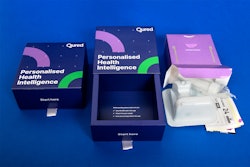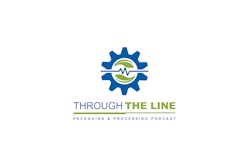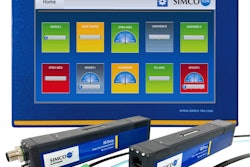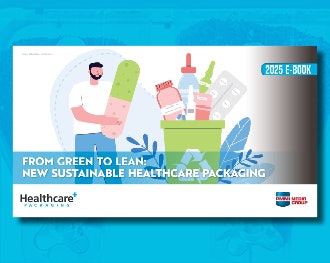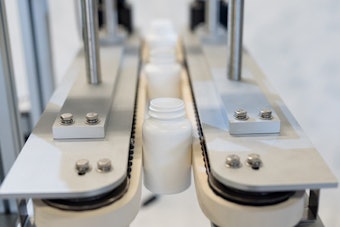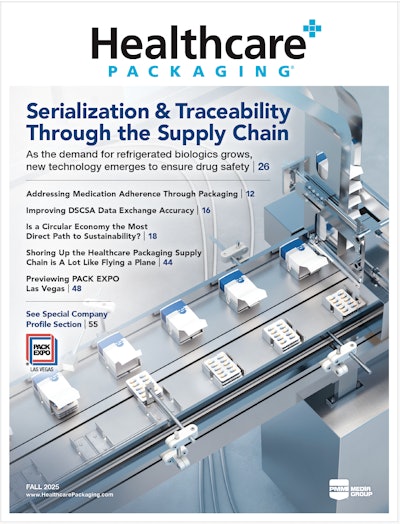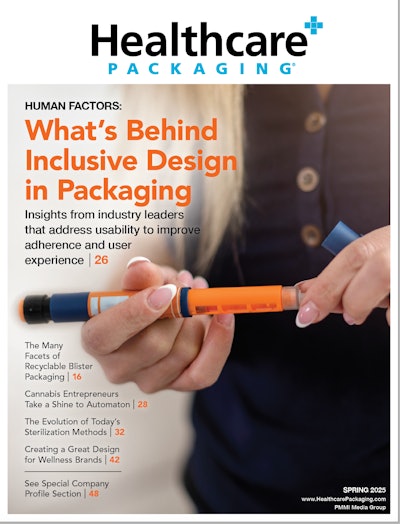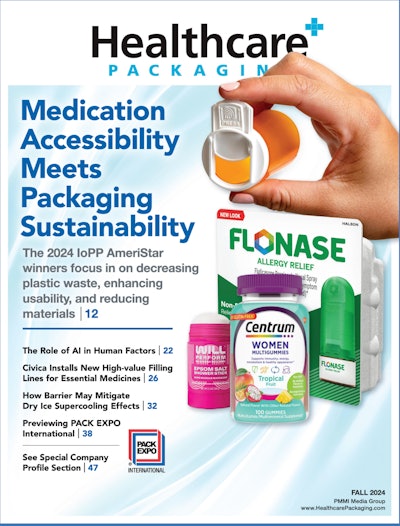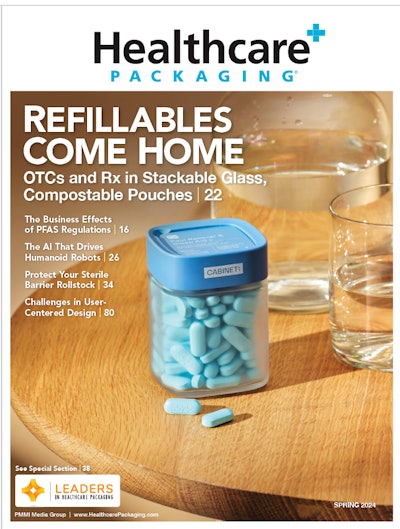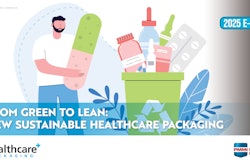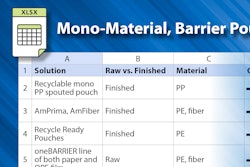Liz Cuneo: Hello, everyone. Today’s conversation is based on GS1’s recent release — new GS1 US research offering companies a roadmap to supply chain modernization through intelligent data capture. The report outlines a path for companies seeking to modernize their supply chains and meet growing demands for transparency, speed, and efficiency.
However, despite strong momentum toward automation, the findings reveal that many companies still face significant operational challenges, ranging from outdated scanning systems to inconsistent labeling practices. Today, we’ll discuss these findings and how they apply to the healthcare industry.
With me today is Tracy Nasarenko from GS1 US. Tracy, would you please introduce yourself?
Tracy Nasarenko: Sure. My name is Tracy Nasarenko, and I’m with GS1 US, where I serve as the Vice President of Customer Success for Healthcare. I’ve worked in the pharmaceutical and healthcare space for over 20 years, and before joining GS1 US, I spent more than two decades in pharmaceutical manufacturing.
Liz Cuneo: Excellent. Thank you for joining me. This is an interesting study, and I’ve spoken with your team before about some of the barriers — why some companies are lagging behind on 2D barcodes and scanning. Could we start by discussing the top barriers preventing companies from upgrading from their legacy scanning systems?
Tracy Nasarenko: The main barriers I’ve seen usually come down to cost and people. Legacy systems tend to be deeply embedded in many processes, which makes change complex. The most successful transitions begin with a thorough assessment — understanding how updating a legacy system will impact every connected process and system. Companies also need to evaluate the expected ROI.
Often, the biggest hurdle is simply that these systems have been in place for so long that people hesitate to change them, even when the benefits are clear.
Liz Cuneo: When companies transition from 1D to 2D barcodes, what changes should they expect in packaging and labeling operations?
Tracy Nasarenko: First, they’ll need to update equipment — upgrading to high-resolution printers and replacing 1D scanners with 2D imagers. They’ll also need supporting software and to ensure that all connected systems and processes can handle the new data.
One major benefit of 2D barcodes is the ability to include additional data points, such as lot numbers, batch numbers, and expiration dates. But that introduces dynamic or variable data, which requires processes and systems that can seamlessly manage those changes throughout packaging and distribution.
Liz Cuneo: And much of this is mandated by regulation, correct?
Tracy Nasarenko: Yes. For pharmaceuticals, particularly prescription drugs, the Drug Supply Chain Security Act (DSCSA) applies. It requires four product identifiers on sellable units — the GTIN with the NDC encoded, lot number, batch number, and expiration date — all contained within a 2D data matrix barcode.
On the medical device side, the Unique Device Identification (UDI) rule governs product identification on packaging levels. Unlike DSCSA, it doesn’t mandate a specific barcode type — 1D or 2D — but the principle of traceability and accurate identification remains critical.
Liz Cuneo: That overlap between medical devices and pharmaceuticals must create challenges, especially for manufacturers that do both.
Tracy Nasarenko: Exactly. Many companies, like Johnson & Johnson, manufacture both prescription and over-the-counter products. Those who’ve already invested in 2D barcodes for compliance often extend that capability across all products for consistency and efficiency. But because not all companies operate the same way, there are roadblocks — especially when some areas are less regulated.
Liz Cuneo: How can manufacturers avoid downtime or relabeling issues during the shift to 2D-enabled production lines?
Tracy Nasarenko: The key is managing dynamic data — lot numbers, batch changes, and expiration dates — in real time. Processes must be designed to support those updates seamlessly. In my experience, this often means adjusting workflows, staffing, and approval processes to ensure smooth transitions within packaging operations. The goal is to structure the system to realize the full benefits of the investment.
Liz Cuneo: Could you share what a typical roadmap looks like for upgrading from legacy scanning to 2D systems?
Tracy Nasarenko: The first step is always to define what you’re trying to achieve. Is it greater data exchange with stakeholders, or improved internal efficiency? Your stakeholders should be part of the roadmap from the beginning. Projects are less successful when they happen in silos.
Next, map out every impacted system and process — both direct and indirect. The DSCSA has shown how collaboration between supply chain partners is essential. If a break or issue occurs, you can’t fix it alone. Manufacturers are increasingly working with hospitals, distributors, and technology providers to understand what data end users need and how best to make it accessible.
Liz Cuneo: Speaking of collaboration, how are technology providers — vision systems, printers, software vendors — aligning with GS1 standards?
Tracy Nasarenko: We’re seeing great momentum. Through GS1’s Solution Provider Partner Program, there’s strong engagement and alignment. Many companies now build systems on standardized frameworks that integrate easily with ERP, warehouse management, and quality systems. Reducing integration complexity through standardization is a major focus.
Liz Cuneo: What kind of workforce training or digital infrastructure is needed to support intelligent data capture at scale?
Tracy Nasarenko: Workforce training is essential. I come from a Lean background, where change management and employee engagement are core principles. The workforce should be part of the project from the start — providing feedback on training and participating in process design. Too often, companies invest in technology but neglect change management. Including employees helps drive ownership and smoother adoption.
Liz Cuneo: That aligns with what I’ve seen in automation projects — people are more likely to embrace change when they understand the “why.”
Tracy Nasarenko: Exactly. When employees understand the purpose behind a change and feel ownership, adoption rates rise dramatically. It’s not just about learning a tool — it’s about understanding how the change contributes to larger goals like efficiency, accuracy, and patient safety.
Liz Cuneo: What’s the biggest misconception about 2D barcodes and supply chain data capture?
Tracy Nasarenko: That it’s just about changing scanners. In reality, it’s about data — understanding what data you need, how you’ll use it, and how to make it actionable. A 2D barcode can carry a large amount of data in a small footprint, but that only matters if your systems and processes can consume it effectively. You need to think about both data management and operational execution.
Liz Cuneo: How will the transition to intelligent data capture reshape collaboration between manufacturers, retailers, and logistics providers?
Tracy Nasarenko: One of the major takeaways from DSCSA is that companies are no longer just selling products — they’re selling products plus data. Consumers and patients expect more transparency. That means supply chain participants must coordinate closely to make data consumable at every stage — from manufacturer to distributor to retailer. Collaboration is essential to realizing those benefits.
Liz Cuneo: Wrapping up, would you say the biggest takeaway is understanding the “why” — the people, the processes, the systems — all working together to ensure accurate, transparent data that ultimately protects patients?
Tracy Nasarenko: Absolutely. There are regulatory drivers, but the scope goes beyond compliance. For example, the National Drug Code will soon expand from 10 to 12 digits, requiring major system updates across the industry. These types of changes can serve as catalysts for broader transformation. When companies invest in modernization, they should think beyond compliance — aiming to maximize ROI by improving data accuracy, collaboration, and overall efficiency.
Liz Cuneo: Excellent. Tracy, thank you so much for your time.
Tracy Nasarenko: Thank you for having me.








